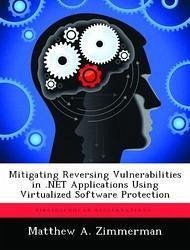
Mitigating Distributed Denial of Service Attacks in an Anonymous Routing Environment: Client Puzzles and Tor
Versandkostenfrei!
Versandfertig in über 4 Wochen
52,99 €
inkl. MwSt.

PAYBACK Punkte
26 °P sammeln!
Network-centric intelligence collection operations use computers and the Internet to identify threats against Department of Defense (DoD) operations and personnel, to assess the strengths and weaknesses of enemy capabilities and to attribute network events to sponsoring organizations. The security of these operations are paramount and attention must be paid to countering enemy attribution efforts. One way for U.S. information operators to avoid being linked to the DoD is to use anonymous communication systems. One such anonymous communication system, Tor, provides a distributed overlay network...
Network-centric intelligence collection operations use computers and the Internet to identify threats against Department of Defense (DoD) operations and personnel, to assess the strengths and weaknesses of enemy capabilities and to attribute network events to sponsoring organizations. The security of these operations are paramount and attention must be paid to countering enemy attribution efforts. One way for U.S. information operators to avoid being linked to the DoD is to use anonymous communication systems. One such anonymous communication system, Tor, provides a distributed overlay network that anonymizes interactive TCP services such as web browsing, secure shell, and chat. Tor uses the Transport Layer Security (TLS) protocol and is thus vulnerable to a distributed denial-of-service (DDoS) attack that can significantly delay data traversing the Tor network. This research is the first to explore DDoS mitigation in the anonymous routing environment. Defending against DDoS attacks in this environment is challenging as mitigation strategies must account for the distributed characteristics of anonymous communication systems and for anonymity vulnerabilities. In this research, the TLS DDoS attack is mitigated by forcing all clients (malicious or legitimate) to solve a puzzle before a connection is completed.












